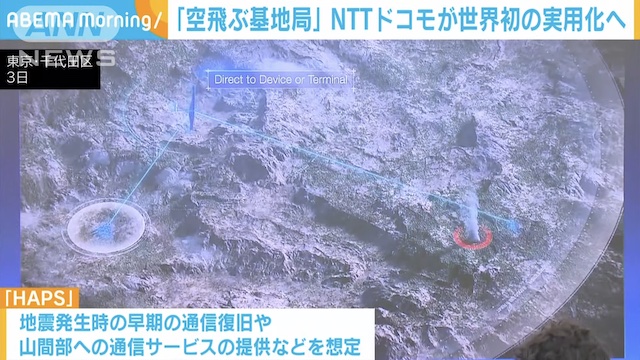TOKYO, Jun 05 (News On Japan) - NTT Docomo has announced that it will be the first in the world to implement a 'flying base station' in the stratosphere to communicate with the ground by 2026.

The 'HAPS' (High Altitude Platform Station), which will be developed by Docomo and others, is referred to as a 'flying base station.' This system involves an unmanned aircraft flying in the stratosphere serving as a base station, enabling 5G communication within a radius of approximately 100 kilometers on the ground.
Docomo plans to invest up to 15 billion yen in a subsidiary of Airbus, which is developing the unmanned aircraft, and aims to begin service provision in 2026.
HAPS has the advantage of connecting directly to smartphones and other devices without requiring specialized communication equipment. It is envisioned to be useful for early communication recovery in the event of an earthquake and for providing communication services in mountainous areas where infrastructure development is challenging.
Source: ANN















